Welcome, earth-conscious viewers, to Planet Earth: Our Loving Home. As we all know, the planet’s climate is changing, and this phenomenon is particularly evident in the Arctic, where
the permafrost is melting, and glaciers and sea ice are receding at a rate beyond scientists’ expectations.
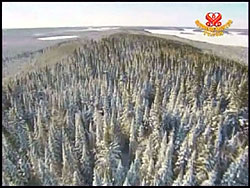
As the warming progresses, more greenhouse gases such as methane, which has long been trapped under the permafrost, is being released into the atmosphere and may accelerate the process of global warming.
With its vital role in the equilibrium of our biosphere, these changes in the Arctic will not only affect local people and its ecosystems but will be felt globally.
In fact, most of the Arctic territory is uninhabited, however, the Norwegian town of Longyearbyen, is home to approximately 2,000 residents.
It lies on the coast of Isfjorden on Spitsbergen, Svalbard's main island halfway between the North Pole and Europe.
For decades, Spitsbergen has fascinated polar explorers and scientists. Currently, during the International Polar Year, several projects are studying the impact of changes in the Arctic’s hydrological systems on the global climate.
It is no wonder that scientists chose Longeyearbyen in remote northern Svalbard for a conference titled, “Hydrology in the Arctic Climate.”
Supreme Master Television covered the conference and gained insight from climatologists and other experts. They expressed their views on hydrological developments and the impact on the climate.
HOST:
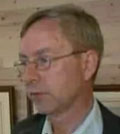
Dr. Erland Källen is a professor of dynamic meteorology at Stockholm University in the capital city of Sweden.
He participated in the Intergovernmental Panel on Climate Change (IPCC) that shared the 2007 Nobel Peace Price with former US Vice President Al Gore.
Professor Källen explains the problem of sea-ice retreat in the Arctic and its implications.
Dr. Erland Kallen:
We have seen a general decrease in the ice extent in the Arctic Ocean over the last 50 years or so.
But in 2007, the minimum that occurred then was totally unexpected.
And we think that it’s mainly due to changes in the large scale circulation of the atmosphere and also perhaps to some extent by ocean currents.
But we still don’t understand completely what happened last year.
SUPREME MASTER TV:
Does the hydrology of the Arctic have implications on the Arctic region as well as global implications?
Killingtveit:
Yes, we think the changes in the hydrology in the Arctic with the flow of rivers into the Arctic Ocean is changing a lot.
It may affect the ice conditions as we hear a lot about in the Arctic Ocean because the amount of fresh water in the sea will have implications for the ice.
And there are even theories saying that the deep water formation is changed, which could actually influence the climate all over the world. And then a lot of glaciers are melting; it could lead to rising sea levels, so I think that is the most important change for the rest of the world, but of course for the people living in the Arctic it could be local consequences also, like when the permafrost is thawing up, houses are sinking or damaged roads, airports and so on.
So, there are local consequences and global.
HOST:
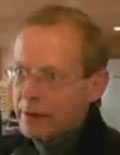 With a Ph.D. in theoretical physics from the University of Oslo, Norway, Dr. Knut H. Alfsen has led many teams of researchers in climate change studies.
With a Ph.D. in theoretical physics from the University of Oslo, Norway, Dr. Knut H. Alfsen has led many teams of researchers in climate change studies.
He is currently the director of research at Norway’s Statistics Bureau. Dr. Alfsen previously
worked as director for the CICERO Center for Climate Research from 1997 to 2002 and as director of research at the Institute for Energy Technology.
SUPREME MASTER TV:
Based on your expertise, how does the loss of permafrost and ground water run off result in regional climate changes?
Dr. Knut H. Alfsen:
Not only regional changes, I mean loss of permafrost, you’re losing the solidity of the ground. So, it becomes difficult to make construction in that region and existing housing for instance may have huge damage.
But more important, when you lose the permafrost, we have also the possibility of releasing methane and carbon dioxide from the soil which will enhance the greenhouse effect.
And we get a positive feedback which is really quite dangerous. So, losing the permafrost is a danger signal.
HOST:
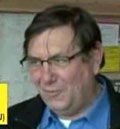 Dr. Ånund Killingtveit, a professor at the Department of Hydraulic and Environmental Engineering (IVB) of the Norwegian University of Science and Technology (NTNU) has been working extensively on projects in the areas of hydrology, water resources management and hydro-informatics.
Dr. Ånund Killingtveit, a professor at the Department of Hydraulic and Environmental Engineering (IVB) of the Norwegian University of Science and Technology (NTNU) has been working extensively on projects in the areas of hydrology, water resources management and hydro-informatics.
He has broad experience with the hydrological problems of Africa, and other parts of the world.
SUPREME MASTER TV:
How has climate change been affecting the hydrology of the basin areas such as East Africa and the Nile basin?
Dr. Ånund Killingtveit:
Hydrology is about water resources. It’s about the circulation, the amount of water and the distribution of water.
So, that’s basically hydrology. In East Africa the hydrology is vital, because there is little water in many places, especially the Nile basin.
SUPREME MASTER TV:
How do human activities change water resources and the hydrological process?
Dr. Ånund Killingtveit:
Usually we say there are three main ways that we change the hydrology.
One is in the western countries, it’s urbanization. If you build towns, cities, you change a lot, because you build concrete, you build houses and the water flows off instead of going into the soil.
In other parts, like in Africa the water in the rivers is disappearing. Other places, when you cut down forest, you get a lot of problems with flash floods and erosion.
And then also agriculture; when you have irrigation, that is also a major change for the hydrology.
HOST:
Welcome back to Planet Earth: Our Loving Home. We continue our discussion with climate experts gathered for the “Hydrology in the Arctic Climate” conference at Spitsbergen, located approximately 1100 km (700 Miles) from the North Pole.
HOST:
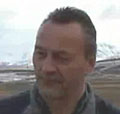
At the University Centre in Svalbard, Norway, Dr. Carl Bøggild works as an associate professor of Snow and Ice Physics.
He has worked for the Geological Survey of Denmark and Greenland (GEUS) as a glaciologist and later as a senior research scientist in the Department of Environmental History and Climate Change.
Dr. Bøggild’s research areas include observation and modeling of melting from glaciers and ice sheets, snow physics and cryospheric processes, remote sensing of snow and ice and Arctic hydrology.
SUPREME MASTER TV:
What new methods are being used for glacier monitoring and how have these new methods changed our understanding in relation to climate change?
Dr. Carl Bøggild :
Traditional methods were manual methods, where you went out and drilled a stake into the ice and was measuring mass loss.
That is still done today, but we are actually in a state now where we get a lot of new information from satellites, which we didn’t have available earlier.
HOST:
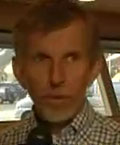 Dr. Jon Ove Hagen is a professor of Glaciology at the University of Oslo, Norway.
Dr. Jon Ove Hagen is a professor of Glaciology at the University of Oslo, Norway.
On May 20, 2008, Professor Hagen was awarded an honorary doctorate by the University of Silesia in Poland for his dedication as a polar researcher, and also his work in promoting cooperation between Polish and Norwegian teams in arctic glaciology.
SUPREME MASTER TV:
Professor, are we facing a much more alarming acceleration of the glaciers’ retreat?
Dr. Jon Ove Hagen :
Yes, I think we see the accelerating melting that we predicted five years ago, because what we have seen up here in Svalbard is a retreat of the glaciers over the last 100 years nearly, starting in the 1920s.
But over the last ten years we have seen an accelerating in the melt rate, mainly caused by longer and warmer melt seasons in the summer.
HOST:
 Dr. Ketil Isaksen, a climate researcher at the Norwegian Meteorological Institute, explain the fragile situation of the permafrost regions.
Dr. Ketil Isaksen, a climate researcher at the Norwegian Meteorological Institute, explain the fragile situation of the permafrost regions.
Dr. Ketil Isaksen :
The permafrost areas are very sensitive to higher temperatures. We know that large areas, for instance in Siberia and Canada, that’s very close to zero, so a slight increase in ground temperature will thaw great areas of permafrost, and this may have implications of increased concentrations of greenhouse gases that comes from the ground and goes up in the atmosphere, but also that can have some consequences in terms of the ground getting very unstable, you get in mountain slopes for instance, you can get more unstable situations with increased avalanche risk and more rock fall and things like that.
SUPREME MASTER TV:
Would you say that our current climate change threatens the possibility of sustainable development and well-being as opposed to just recent years?
Dr. Ketil Isaksen :
Yes, certainly we are threatening sustainability in the long run.
Climate change is making fundamental changes to part of the system that we are totally dependent on.
I’m talking about ecosystems, both on land, terrestrial ecosystems and also in the oceans, the marine ecosystems.
We are redistributing water on this globally; we are melting glaciers which will affect the water supply to billions and billions of people.
We shall have to move, because people don’t live where there is no water.
So, we are creating or making a set-up for social conflicts on the grandest scale, so very much threatening the sustainability of the globe.
HOST:
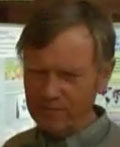
Dr. Eirik J Forland is a Norwegian researcher who specializes in the field of climate analysis for past, present and future climates.
He is also an expert in precipitation measurement problems and analysis. Dr. Forland has worked as a researcher at the University of Bergen.
At the Meteorological Institute, Dr. Forland was head of the climate research division.
Dr. Eirik J Forland :
We want to tell people exactly where they live what they can expect from these global climate models.
So, we take the results from the global models and then we call it downscaling. We get down
exactly to the sites where people live and try to see the consequences.
For instance, we can then say what will happen with the rainfall in the future, will it be so that this sewage system that you have in your city cannot stand what these future climate models tell us?
What about a combination of heavy rainfall and snow melt in the future, will you have that directly into your cellar?
Because it says something about snow, will it be so much more snow that your roof will not stand it?
So, we try to do this, so people can imagine what will happen exactly where they live.
HOST:
At present, scientists are working diligently, observing changes in hydrological and other ecosystems affected by climate change all over the globe.
Their research serves to give us early warning signs of ecological changes that may affect future the life of humans as well as that of flora and fauna.
We thank all scientists for their devotion and sacrifices in their meticulous daily work, often conducted under extreme life conditions in remote, uninhabited places, in order to bring greater awareness on the need for more sustainable and Earth-preserving lifestyles.



